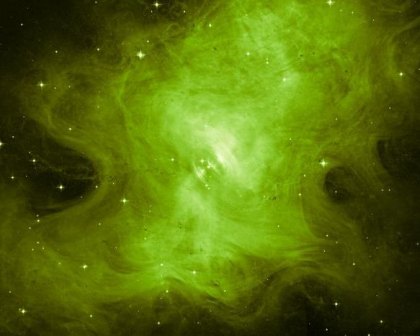Quick Study: About the Crab Nebula

In reference to space, a nebula is defined by Webster's as “any of many immense bodies of highly rarefied gas or dust in interstellar space.” A supernova -- an exploding star -- created the Crab Nebula, and it was the first supernova ever recorded, according to Cornell University's website.
The Crab Nebula has been studied for centuries. Here is the rundown:
Early reports: Chinese astronomers recorded seeing the supernova that created the nebula way back in 1054, according to Cornell. How bright was it? For several hundred days, “the star was visible during the day, slowly, slowly fading toward the obscurity from which it emerged,” reports the Harvard-Smithsonian Center for Astrophysics.
A catchy name: Over time, the nebula was also spotted by Japanese, European, Arabic and Native American star watchers. The French astronomer Charles Messier saw the nebulal in 1758 and listed it as "Messier 1" in his celestial catalog. And in 1840, British astronomer William Parsons sketched the nebula. He thought it looked like a crab, recounts NASA’s Universe Discovery Guides.
At the center of the nebula: The neutron star (a small, dense star) at the center has “about the same mass as the sun but is squeezed into an ultradense sphere that is only a few miles across and 100 billion times stronger than steel,” according to NASA. In his book, Cosmos (Random House; 1980), astronomer Carl Sagan wrote that the "neutron star at the center of the Crab Nebula is an immense atomic nucleus, about the size of Manhattan, spinning 30 times a second."
Where to find the nebula: It is in the constellation Taurus, 6,500 light-years from Earth. It is bright enough to be visible with amateur telescopes.
To know more:
Cornell University: What supernova created the Crab Nebula?
Cosmos by Carl Sagan (Random House; 1980)
Encyclopedia Britannica: The Messier Catalog
Harvard-Smithsonian Center for Astrophysics: Crab Nebula
NASA: A dead star's ghostly glow
Related:
Mystery star dims, baffles scientists
NASA’s Hubble spots star – or lightsaber
If you would like to comment, give us a shout, or like us on Facebook and tell us what you think.

